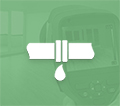Snake A Drain: A DIY Guide
Slow-draining or clogged drains may be easily removed using a drain auger or, occasionally, a drain snake. While more challenging clogs might require a plumber’s assistance, most jams caused by soft debris can be snagged and cleared with a drain snake.
By using this straightforward, inexpensive device that you can keep in a sink cabinet, you’ll save time and money by forgoing the services of a plumber to unclog your clogged drain.
When Must a Drain Be Snaked?
Use a drain snake if soft obstructions up to 15 to 25 feet down the line cause your sink, shower, or tub drain to empty slowly or not at all. When chemicals, plunging, or the use of a plastic hair snake fail to resolve water drainage problems, snaking or augering a drain can often solve the problem.
Drain snakes cannot cut through obstructions in drainage pipelines or lift heavy objects like rings.
How Does a Drain Snake Operate and What Is It?
A metal cable that has been coiled into a drum for protection is a drain snake, also referred to as a drain auger. The cable can be up to 25 feet long. The cable’s end has a corkscrew-shaped spring that unclogs drain obstructions.
When pushed by hand, the cable unravels from the drum and moves through the drain. The drum locks into place when the corkscrew end of the snake cable makes contact with something, allowing the cable to turn. The obstruction can be pulled back and removed because the sharp end’s rotation allows it to grab and hold onto the object.
For this DIY solution on snaking a drain, you will need the following items:
- Drain snake
- Bowl or shallow bucket
- Rags
- Old towels
- Plug wrench (for tubs and showers)
- Materials
- Paper towels (optional)
DIY Instructions
Access the drain by removing the P-Trap.
Remove the P-trap for sink drains by reaching into the sink cabinet. The P-trap is a curved pipe with a 1 1/4 to 2-inch diameter and a shape resembling the letter P. To stop sewage fumes from entering your home through the drain, this trap gathers standing water.
By using your hands, you can fully remove the P-trap. Lay the used towels out on the floor of the sink cabinet. Place the basin or bucket beneath the P-trap. The plastic nuts must be undone. Release the P-trap to let the accumulated water in the container drain.
In tubs, the overflow portion of the drain is where the trap is located. An electric snake will easily navigate the trap and down the pipes; a manual snake may be difficult to use in this situation.
Shower drains should be removed. Start by using a flat-head screwdriver to remove any screens or covers gently. Using a plug wrench, turn the drain in the opposite direction to remove it.
Increasing the Cable’s Length
Remove the thumbscrew from the drum of the drain snake. Hand-extend the cable and insert it into the drain pipe. Stop when you come across an impediment.
Obstruction Snag
Tighten the thumbscrew on the drum. Slowly turn the drain snake handle two or three times.
The cable needs to be retracted.
Remove the thumbscrew and tighten it again. Pull the cable back toward you slowly with your hand.
A snake is used to clean drains.
Remove any debris from the drain snake’s tip. Remove the debris by twisting it counter-clockwise; you may need to use a paper towel or other disposable cloth to remove and dispose of the blockage.
Continue to clear the pipe.
If you believe there are more clogs, repeat the procedure, beginning with the first step. Because drain flow cannot be verified without disassembling the sink’s drainpipe, it is usually preferable to keep snaking the drain until the cable runs out.
Drain flow test
Reconnect the drainage pipe. To check for drainage, run the water.
The snake used to clean drains.
After snaking the drain, it is critical to clean the drain snake. Bacteria-laden debris and hair will become entangled in the spring and cable and should not be withdrawn into the drum. Furthermore, if exposed to water, the cable will rust. Allow the cable to dry after washing it.
Some Tips for Snaking a Drain
Do not pour caustic chemicals down the drain before snaking it.
Check that the cable is pulled straight out. Turning it counter-clockwise may release the obstruction and allow it to re-enter the drainage pipe.
If the snake is trapped, continuing to revolve the drum and cable may cause the cable to kink and become much more stuck. Reverse the drum and cable, carefully backing the cable.
When to Hire a Professional
When the length of your drain snake is insufficient to clear the clog, call a plumber. Drain augers can range in length from 15 to 25 feet.
Drain snakes can remove clogs but not cut through obstructions. Cal1st Choice Plumbing, Flood & Restoration or a rooter-type service, their motorized sewer machines can bore through and dislodge solid objects that have become lodged in pipes.
Drain cleaning is relatively inexpensive, so if you need clarification on using the snake or clearing the drain successfully, calling a professional at 866-437-0205 is your best option. Out of the drain while tightening the thumbscrew.










